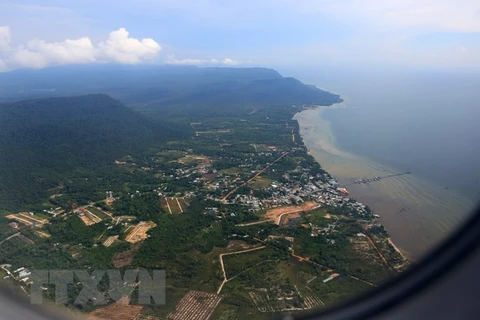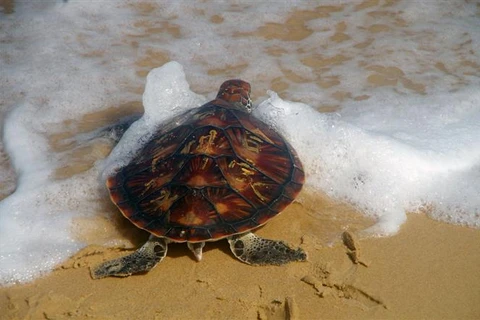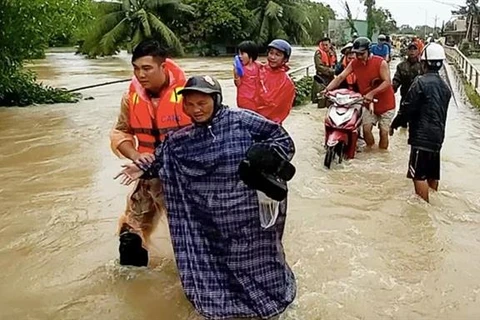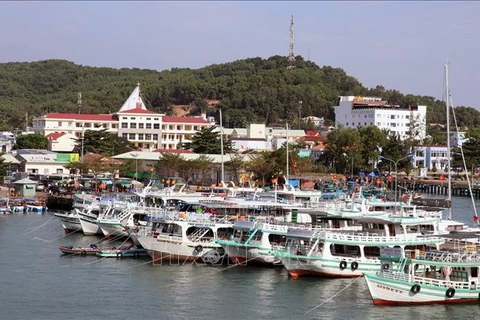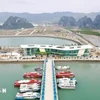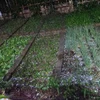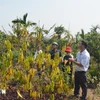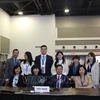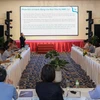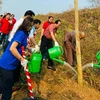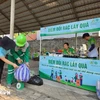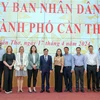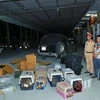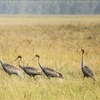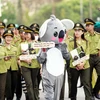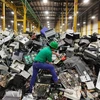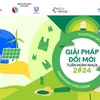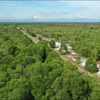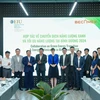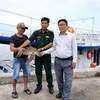Hanoi (VNA) – The Phu Quoc marine protected area (MPA), part of the Phu Quoc National Park, is located in the waters of Phu Quoc island district, the southern province of Kien Giang. It was established in 2007, and is among 11 marine protected areas in Vietnam at present.
Considering an increasing number of tourists to Phu Quoc and the over-exploitation of local fishery resources, the local government local government is looking for effective solutions to complete the two major tasks of conserving nature and serving tourism development.
A rich eco-system
The Phu Quoc MPA, covering 26,863 ha, is home to many types of ecosystems such as coral reefs, seagrass meadows and mangrove swamps, which provide habitats for various rare and precious fauna and flora species.
The MPA comprises 9,720 ha of coral reefs in Hon Thom islet group, 6,825 ha of seagrass meadows spreading over waters from Bai Thom and Ham Ninh communes, and over 10,000 ha of development area.
The Phu Quoc MPA plays an important role in restoring and developing fisheries resources, developing the local marine economy, thus contributing to improving livelihoods for communities in coastal and island areas, as well as to scientific research, community-based education, eco-tourism and environmental protection.
The coral reefs and seagrass meadows provide habitats for numerous types of fish and other sea animals such as sea horse, crab, or sea turtle. It is noteworthy that the waters are home to many rare and precious species that have been listed in the International Union for Conservation of Nature (IUCN) Red List of Threatened Species, for example Dugong, sea turtle and dolphin, to name just a few. Thanks to good conservation work, the number of such rare and precious sea animals has been on an upward trend over recent years.
However, surveys of scientists have shown that the marine resources in Phu Quoc waters have gradually become depleted, the sea grass meadow ecosystem has undergone changes and water near the shore has been polluted, affecting the habitats and food sources of marine species.
The major factors leading to the worrying situation include rapid population growth, over-exploitation, use of backward fishing methods and low awareness among local communities.
Working towards sustainable development
In implementing the strategy for sustainable development of maritime economy towards 2030 with a vision to 2045, the provincial People’s Committee said it is urgent to conduct surveys on biodiversity in Phu Quoc and adjust the sub-zones in the Phu Quoc marine protected area.
The provincial authorities have instructed the Department of Agriculture and Rural Development to tighten fisheries management in the marine protected area and intensify the enforcement of the Law on Fisheries.
The department will promote the dissemination of regulations on marine species subject to ban of exploitation, as well as rules on fishing means, vehicles, fishing seasons and fishing grounds in order to protect the marine resources.
A buffer zone of more than 12,467ha will be set up to limit the direct impacts of outside socio-economic activities on the conservation areas.
The provincial administration has also directed the Phu Quoc National Park to strengthen the conservation, restoration and development of marine ecosystems and sea plants and animals.
The park will coordinate with relevant agencies and the People’s Committee of Phu Quoc district to implement programmes and projects to help people living in the marine protected areas to switch to other jobs. The agencies are required to provide vocational training to local fishermen and transfer scientific-technical advances to them with a view to helping them shift to sustainable fishing.
Meanwhile, the Tourism Department is tasked with managing and guiding suitable tourism activities in the marine protected area.
In 2018, Phu Quoc welcomed more than 4 million tourists, a year-on-year rise of some 36 percent./.



